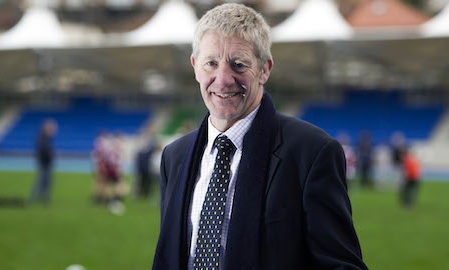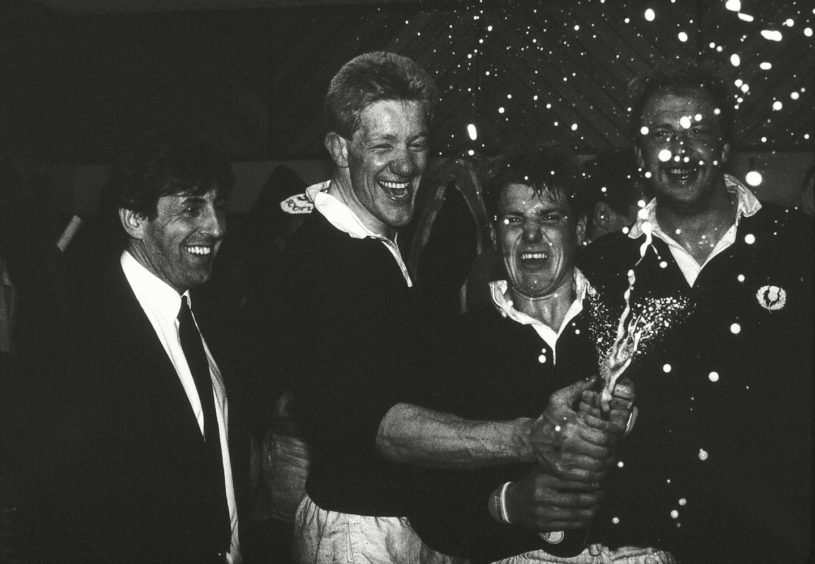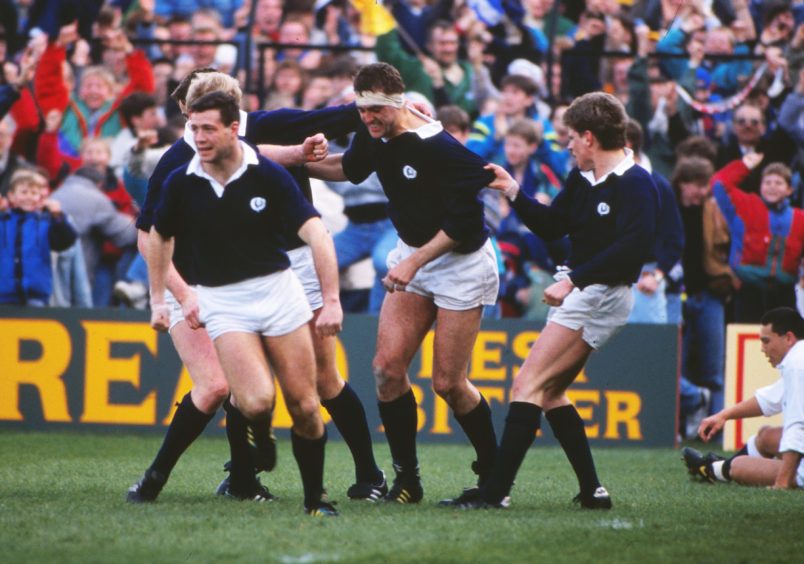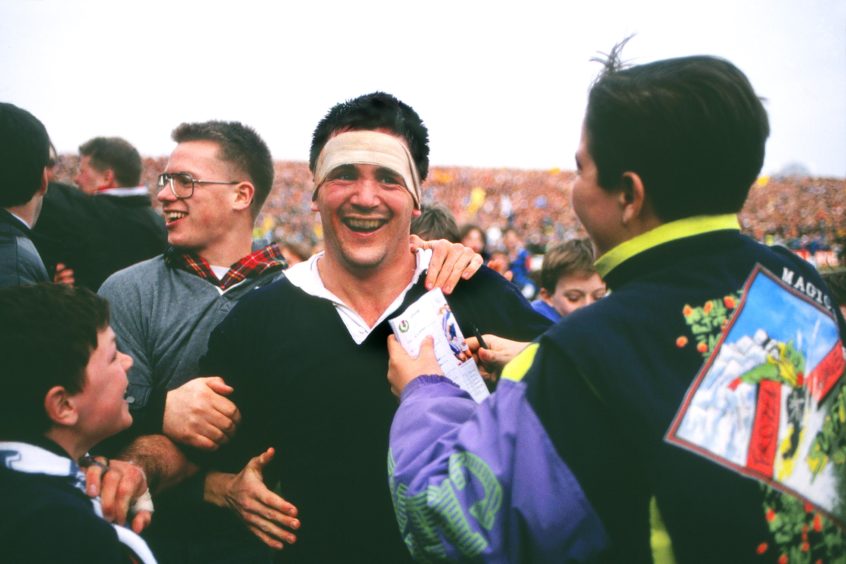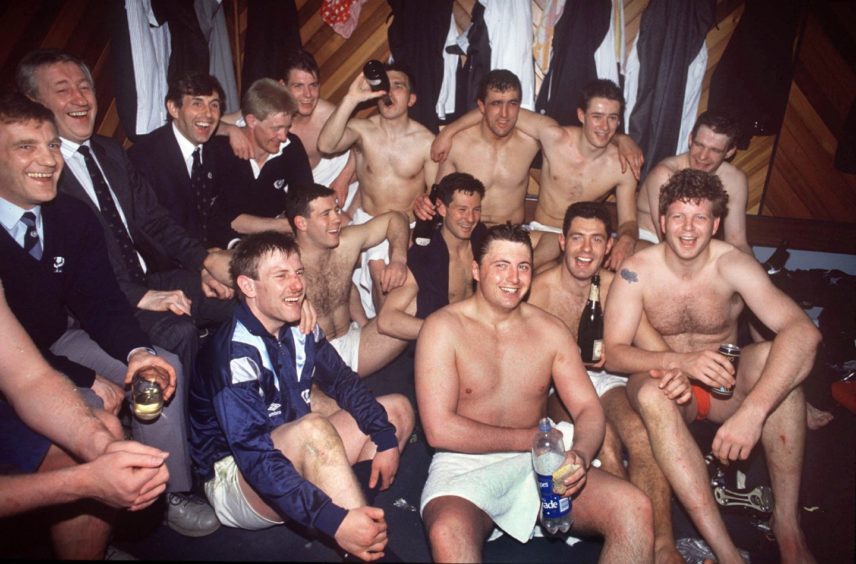Scottish rugby hasn’t hit the heights in recent years, but nobody in the sport could ever accuse John Jeffrey of underachievement.
So the news that the Border stalwart has become the new chairman of the SRU should at least ensure there’s a steady hand on the tiller amid turbulent waters at Murrayfield.
Jeffrey, after all, was part of the famous team which won the 1990 Grand Slam with a nerve-shredding victory over Will Carling’s English favourites in Edinburgh.
Calcutta Cup
And the combative flanker was involved in the British and Irish Lions’ series triumph when they rallied from adversity to get the better of Australia in the previous year.
He was also the man who took the Calcutta Cup for an impromptu stroll through the night streets of Edinburgh – in the company of England’s Dean Richards – during the post-match revelries in 1988: a transgression which brought him a six-month ban as the famous trophy was transformed into something more closely resembling a shield.
But that was simply part of the intriguing story of this redoubtable Kelso character.
Jeffrey was nicknamed the White Shark throughout his career, but it had nothing to do with the indefatigable manner in which he marauded around the pitch in search of prey.
Instead, the label was attached to him during a trip to the West Indies, where his compatriots all developed tans in the sweltering heat, apart from one of their number.
West Indies
He recalled: “Everybody was black, except me. We were all swimming in the sea and, when I was coming out of the water, somebody shouted out: ‘Hey folks, here comes the White Shark’. Well, it just stuck after that.”
He has always been a wry, self-deprecating and intelligent man – with membership of Mensa in his possession – but whenever I met Jeffrey, either at his farm or in the clubhouse at Poynder Park, there has never been any doubt of his commitment to the Scotland cause and unceasing ability to nag away at opponents like the toothache, not so much flirting with the offside law as inviting it upstairs for a night of passion.
Yet, when he joined such stellar talents as the Hastings brothers, Gavin and Scott, David Sole and Finlay Calder, all of whom collaborated in narrowly beating France, then thrashing England 33-6 at Murrayfield in 1986, this sturdy fellow gradually, inexorably became an integral member of one of his country’s greatest-ever sides.
Too often, Scots have struggled with an inferiority complex or questioned their qualities in comparison to their counterparts from England, Ireland and Wales.
Australia
Yet that attitude was notably absent after a significant number of the SRU’s finest travelled to Australia for the Lions sojourn, with Calder as captain and Jim Telfer and Ian McGeechan pulling the strings in the coaching stakes.
They witnessed their Five Nations rivals at the closest of quarters and reached the conclusion that there was no need to treat them as supermen. It was a realisation which, as usual, was eloquently summed up by Jeffrey.
He said: “Maybe it used to be true that the reputations of some of the best Welsh and English players meant they had an intimidating presence on those around them, who weren’t as accustomed to winning all their matches and going out and battling for Triple Crowns and Grand Slams every season.
“But, by the time of the ‘89 Lions tour, we had the two Hastings brothers and Craig Chalmers and these guys never felt inferior to anybody on a rugby pitch in their lives.
“When we went to Australia, we knew we had every bit as much right to be there as anybody else from the other home nations.
”If anything, the way the series panned out with Finlay doing a terrific job in rallying the team after they lost the First Test (30-12 in Sydney) and helping us to win the next two (19-12 in Brisbane and 19-18 in Sydney) proved that the Scots were capable of succeeding at the highest level – and the Australians were very close to being at the highest level and they went on to win the World Cup in Britain two years later.
“We had a debrief at the end of the campaign and we came to the conclusion that we were as good as any of the others on the tour and probably had a better work ethic.
”It made us, if not confident, then certainly in a positive frame of mind and we felt that we could make an impression in the next championship.”
Gangs of New York
As it transpired, that was a classic case of understatement, with Sole and his charges embarking on a slow purposeful march into the Murrayfield cauldron, as the prelude to charging at their opponents like Daniel Day-Lewis in Gangs of New York.
It was spellbinding to behold and if any of the much-fancied English line-up imagined they could saunter to the Grand Slam, they were swiftly disabused of that notion,
Teller said after the 13-7 triumph that he had prepared his men for a war of attrition, but even this hard-to-please mentor was proud of their Stakhanovite display.
As he said: “The first thing that registered with me was Fin Calder taking a free kick near the halfway line and driving straight into the English, ball gripped under his arm, legs strong, staying upright and holding off the English.
“The whole Scottish pack came in behind him and they drove England back 10, 15, 20 metres. And whoof! The cried noise just lifted into the sky, the hair went up on the back of my neck, and Scotland were well and truly on the move.”
Prized objective
Jeffrey was similarly combative, determined not to countenance a single backward step, and it was a measure of his approach to rugby that he must have covered every blade of grass in pursuit of his prized objective.
He will need to show the same resolve in tackling the many issues which are frustrating the Scottish game in 2020, whether it’s forging new relationships with the grassroots clubs, devising a long-term strategy to overcome the financial woes which have been inflicted by Covid-19, and dealing with the suspicions which have increased among many people about the lack of transparency among the Murrayfield panjandrums.
It will be a Herculean challenge. But nothing which Jeffrey has not confronted before.
What needs to be remembered is this: there was never a trace of anything underhand or devious in his make-up.
On the contrary from the moment Jeffrey made his debut in 1984 to the contest where he bowed out – following a hard-fought 13-6 loss to the All Blacks in the third place play-off in Cardiff in 1991 – he was somebody who could be relied upon to offer absolutely everything he possessed for the thistle.
As a farmer, he was also acquainted with the cyclical nature of things and always appreciated that there would be more days where the Scots lost than won against the leading powers, so they were entitled to enjoy their successes all the more.
In the modern professional era, as Jeffrey continues to serve his country, and rugby is in danger of becoming sterile attritional fare with more focus on the breakdown than at an RAC training weekend, it is an attitude with an added resonance.
Time for the White Shark to show his bite in the months and years ahead.
